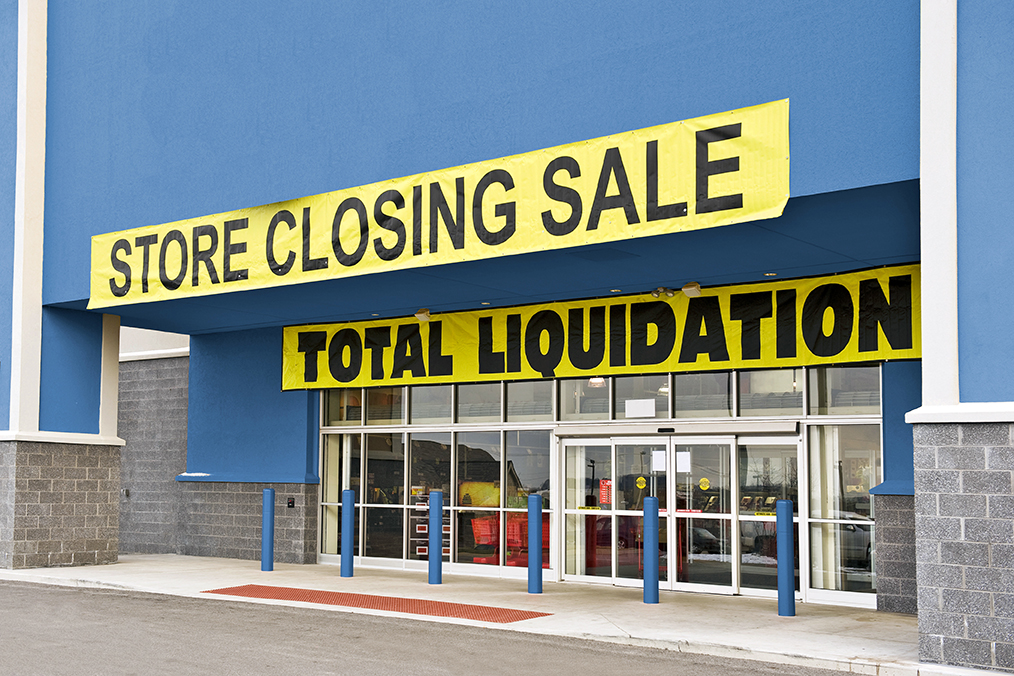
The term “Retail Apocalypse” is trending. When you’re looking to fill vacancies, other words like “mass closures” or “bankruptcy” could also elicit an immediate “No thanks!” about certain brands. You may already be facing challenges to your business, and it makes sense that you wouldn’t want to take on a struggling tenant.
But the truth is there’s more to the story. And you don’t want to miss out on a good fit for your vacancy because of a misunderstanding. Let’s take a look at what bankruptcies and closures can actually mean.
Check the Chapter
First things first, make sure you know what a brand is really dealing with. There are many types of bankruptcy. Most of us are familiar with chapter 7 or 11, but the Bankruptcy Code includes a few others as well. While filing for chapter 7 bankruptcy signals a total liquidation of all the company’s assets, chapter 11 allows the business to stay in business and try to work out its issues with less debt on their balance sheets.
This means that if a brand that might be a good fit for your vacancy recently filed chapter 11 —they may still be a good fit! The bankruptcy may just be a strategic way to restructure debt, and put them in a better position to be a long-term successful tenant.
Closures Are Strategic
While closures often go hand-in-hand with bankruptcy, these two are not always connected. Bankruptcy of any type can include closures, sometimes on a large scale, but in other situations, closures can be a way of trimming the fat to avoid bankruptcy.
Brands may be required to close locations where they can’t afford rent, they may need to sell real estate to bail themselves out, or they may simply close stores that have long been unprofitable. All of this means that brands announcing closures—if they’re doing it strategically—might actually be a better choice than other brands that are spread too thin. It’s important to be working with brands who are getting ahead of any issue, especially in the current economic climate, to ensure your long-term business health.
Smart Expansion
One very strategic reason for closures may actually be expansion. Some brands choose to continue expanding by closing the under-performers to open new stores, despite financial challenges, to boost their cash flow. These changes could be to change the square footage of their stores or move into previously untapped markets.
Escaping an LBO
Another common cause of bankruptcies lately are companies looking to ease the impact of a leveraged buyout. At some point in their history, many retailers have been purchased by other firms, often private equity firms, who used cheap debt to close the transaction. Even if business is thriving, oftentimes they can’t properly expand and build the business how they’d like to without filing for chapter 11 to escape that debt.
However, even with all that going on these companies are still a viable option for landlords, as they have proven growth potential. This means that it’s critical that you understand the background of why a company is filing bankruptcy if you want to make the best decisions when it comes to new tenants.
A Means To An End
Overall, bankruptcy and store closures can both be necessary tools in the evolution of a brand, and they don’t necessarily mark the impending doom often associated with the terms. The finances of a company are often complicated, but when you take a look at the long game, many of these brands will be around far into the future and are still worth offering a lease to. Even a company in bankruptcy could be approached for an expansion deal.
Interested in researching these brands and understanding what’s going on behind the scenes? Want more insight on brands in bankruptcy, and help figuring out what’s really going on? Our research team is here to help! Schedule a free demo of Retailsphere and let us help you fill your vacant spaces.